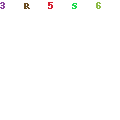Friday's Faith
The Art of Presence
~David Brooks
via
~The New York Times
{As a follow-up to, "A New Normal: Ten Things I've Learned About Trauma" by Catherine Woodiwiss, (I had posted for you on this blog yesterday under Thursday's Therapy), David Brooks of The New York Times had written the following synopsis of Catherine's work as well as of conversations he had had with Catherine's parents, both of whom are Child-Loss parents. I discovered this article today and thought it would be a great post for Friday's Faith:}
The Art of Presence
JAN. 20, 2014
Tragedy has twice visited the Woodiwiss family. In 2008, Anna Woodiwiss, then 27, was working for a service organization in Afghanistan. On April 1, she went horseback riding and was thrown, dying from her injuries. In 2013, her younger sister Catherine, then 26, was biking to work from her home in Washington. She was hit by a car and her face was severely smashed up. She has endured and will continue to endure a series of operations. For a time, she breathed and ate through a tube, unable to speak. The recovery is slow.
The victims of trauma, she writes in a remarkable blog post for Sojourners, experience days “when you feel like a quivering, cowardly shell of yourself, when despair yawns as a terrible chasm, when fear paralyzes any chance for pleasure. This is just a fight that has to be won, over and over and over again.”
Her mother, Mary, talks about the deep organic grief that a parent feels when they have lost one child and seen another badly injured, a pain felt in bones and fiber.
But suffering is a teacher. And, among other things, the Woodiwisses drew a few lessons, which at least apply to their own experience, about how those of us outside the zone of trauma might better communicate with those inside the zone. There are no uniformly right responses, but their collective wisdom, some of it contained in Catherine’s Sojourners piece, is quite useful:
Do be there.
Some people think that those who experience trauma need space to sort things through. Assume the opposite.
Most people need presence.
The Woodiwisses say they were awed after each tragedy by the number of people, many of whom had been mere acquaintances, who showed up and offered love, from across the nation and the continents. They were also disoriented by a number of close friends who simply weren’t there, who were afraid or too busy.
Anna and Catherine’s father, Ashley, says he could detect no pattern to help predict who would step up and provide the ministry of presence and who would fumble.
Neither age, experience nor personal belief correlated with sensitivity and love.
Don’t compare, ever.
Don’t say, “I understand what it’s like to lose a child. My dog died, and that was hard, too.” Even if the comparison seems more germane, don’t make it. Each trauma should be respected in its uniqueness. Each story should be heard attentively as its own thing.
“From the inside,” Catherine writes, comparisons “sting as clueless, careless, or just plain false.”
Do bring soup.
The non-verbal expressions of love are as healing as eloquence.
When Mary was living with Catherine during her recovery, some young friend noticed she didn’t have a bathmat. He went to Target and got a bathmat. Mary says she will never forget that.
Do not say “you’ll get over it.”
“There is no such thing as ‘getting over it,’ ” Catherine writes,
“A major disruption leaves a new normal in its wake. There is no ‘back to the old me.’ ”
Do be a builder.
The Woodiwisses distinguish between firefighters and builders.
Firefighters drop everything and arrive at the moment of crisis.
Builders are there for years and years, walking alongside as the victims live out in the world.
Very few people are capable of performing both roles.
Don’t say it’s all for the best or try to make sense out of what has happened.
Catherine and her parents speak with astonishing gentleness and quiet thoughtfulness, but it’s pretty obvious that
these tragedies have stripped away their tolerance for pretense and unrooted optimism.
Ashley also warned against those who would overinterpret, and try to make sense of the inexplicable.
Even devout Christians, as the Woodiwisses are, should worry about taking theology beyond its limits. Theology is a grounding in ultimate hope, not a formula book to explain away each individual event.
I’d say that what these experiences call for is a sort of passive activism.
We have a tendency, especially in an achievement-oriented culture, to want to solve problems and repair brokenness — to propose, plan, fix, interpret, explain and solve.
But what seems to be needed here is the art of presence
—to perform tasks without trying to control or alter the elemental situation. Allow nature to take its course.
Grant the sufferers the dignity of their own process. Let them define meaning.
Sit simply through moments of pain and uncomfortable darkness. Be practical, mundane, simple and direct.
Ashley and Mary went to Afghanistan a few months after Anna’s death. They remember that as a time out of time.
They wept together with Afghan villagers and felt touched by grace.
“That period changed me and opened my imagination,” Ashley recalls.
“This thing called presence and love is more available than I had thought."
It is more ready to be let loose than I ever imagined.”
{Highlights, and some indentions, mine}
A version of this op-ed appears in print on January 21, 2014, on page A19 of the New York edition with the headline: The Art of Presence. Order Reprints|

Kind Gesture Graphic, thanks to
2012- Love and Loss / Facebook
"The Art of Presence" article:
http://www.nytimes.com/2014/01/21/opinion/brooks-the-art-of-presence.html













































No comments:
Post a Comment